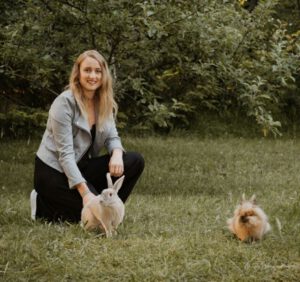“I never thought such small animals could be so expensive.”
When rabbit owners are asked what they underestimated most at the beginning, the majority admit they had no idea about the real costs. Dwarf rabbits are not any cheaper than medium-sized breeds.
In addition to the purchase price and the initial setup, there are ongoing monthly expenses for food, bedding, and more. Veterinary costs also need to be taken into account.
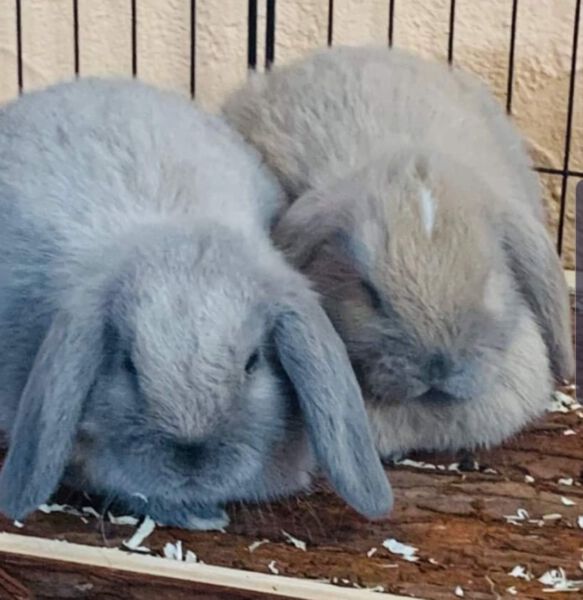
How much does it cost to buy a rabbit?
Even though rabbits can be found very cheaply through classified ads or at small animal markets, beginners should absolutely avoid getting them this way! These animals usually come from dubious mass breeders, backyard breeding, or uncontrolled “living room breeding,” and they often carry numerous illnesses and problems. That “cheap classified ad rabbit” can easily rack up veterinary bills in the thousands within the first few days in its new home, due to the many health issues it brings along.
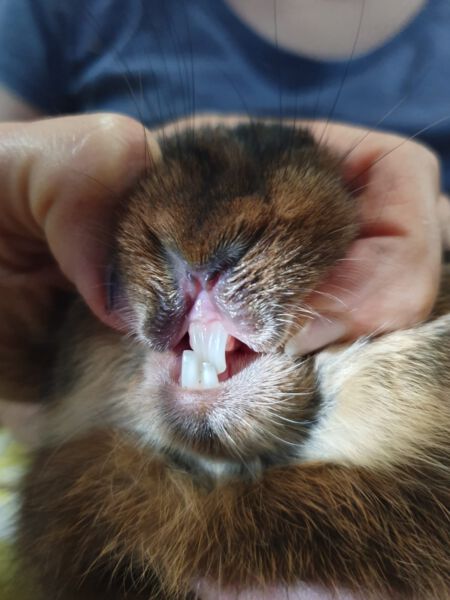
“Unfortunately, I did my research too late and bought two adorable lop rabbits because the breeder gave me a good impression. Later I realized that they had been handed over far too young. On the third day, one of them suddenly stopped eating. I had to rush to the emergency vet — luckily he survived, but I found out they had coccidia. I had to give them medication for days, clean and disinfect everything…
They also weren’t vaccinated, and I couldn’t get them vaccinated for a long time because the coccidia had to be treated first. When the vaccination finally happened, the vet explained to me that they were a case of ‘torture breeding,’ since most lop-eared rabbits develop severe ear pain from chronic infections. That means I now have to do regular ear care, which is time-consuming and which both of them hate.
Because the male wasn’t neutered, I had to separate them at 12 weeks (sexual maturity) and then reintroduce them later, which was very stressful and exhausting. This could have been avoided if the breeder had neutered him before 12 weeks of age.
Even though I love them dearly, I feel sorry for them today, and I would never support something like this again. In the future, I would adopt rabbits from a good shelter, where they are fully checked, vaccinated, and neutered.”
— Testimonial from Simone
It’s worth taking the time to carefully choose where you get your rabbits and to learn how to recognize a reputable source. A rabbit from a good adoption place — vaccinated, free of intestinal parasites, tested negative for EC (or from EC-negative parents), neutered, raised on fresh food, and kept in a large, species-appropriate enclosure — usually costs between €80 and €200.
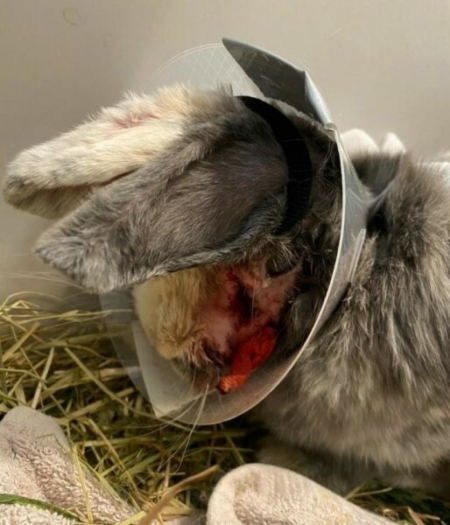
Since rabbits are social animals, you must always adopt at least two. While the purchase price may be higher and the selection process more demanding, it will save you from unpredictable follow-up costs in the early stages.
Note: Rabbits should not be rehomed before 10 weeks of age — any reputable source will only offer them from that age onwards.
What does the initial setup cost?
Especially at the beginning, many buyers make the wrong purchasing decisions. To help avoid this, here’s a checklist of the basic essentials:
What do rabbits need?
- Transport box: approx. €25
- Hay rack: approx. €10
- Stable ceramic water bowl: approx. €3
- At least one hideout per rabbit, minimum size 30 × 40 cm: from €30 each
- Enclosure furnishings (digging box from approx. €35, tunnels/bridges around €30 each)
- Toys/occupational materials, homemade, collected, or bought: €0–50
- Care supplies (broom, dustpan with brush, nail clippers, grooming brush, etc.): approx. €50
Indoor housing:
- Fencing for an indoor enclosure (never a cage!): approx. €100
- Wall protection: approx. €50
- Litter boxes/cage trays/cat toilets, at least one per animal, minimum 80 × 50 cm: €15–20 each
- PVC/vinyl flooring as a base (larger than the enclosure so the edges can’t be chewed): approx. €50
- Small rugs (washable if needed): approx. €20
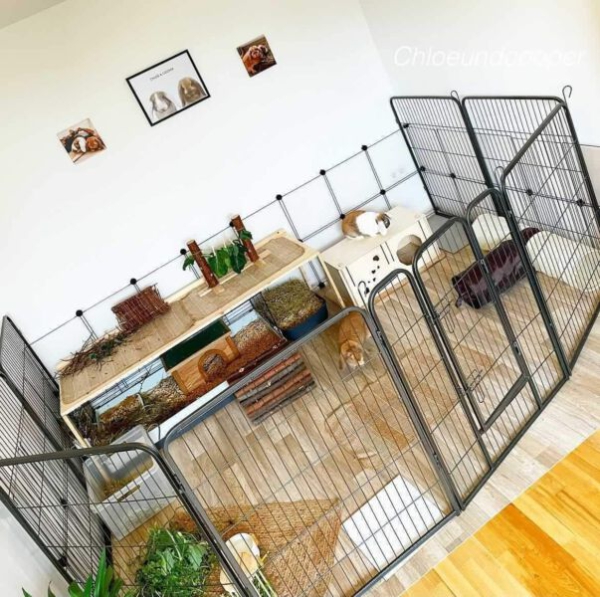
Outdoor housing:
- A marten-proof outdoor enclosure (purchased or self-built): depending on whether it’s DIY or bought, and whether it’s knee-high or walk-in, €500–1,500. Make sure to use marten-proof wire!
- Shelter hut (never lock the rabbits inside!): from €80
- A fence at least 90 cm high for daytime free roaming: from €80
- Optional: pond net or fruit tree net for protection from above during free roaming: from €5
- Digging protection for both the daytime run and the night enclosure: from €80
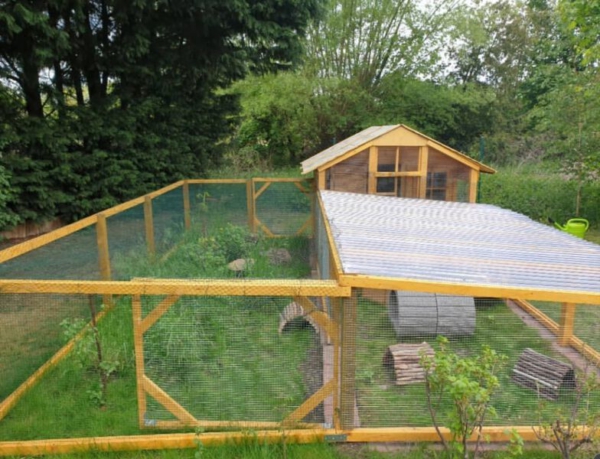
For the initial setup, you should expect to spend around €440 for the basic equipment for two rabbits kept indoors, or about €770–1,800 for outdoor housing with a marten-proof enclosure.
When rabbit owners are asked what they would have done differently in hindsight, almost all of them agree that they would have built a walk-in enclosure right from the start, as it makes day-to-day care far less burdensome.
In addition to the initial expenses, you should also consider the fixed monthly costs, which are roughly divided as follows:
- Bedding
- Food:
- Fresh vegetables
- In summer, you can collect greens for free in nature.
- Hay
- Do not feed commercial dry pellets!
- Accessories and enrichment (replacing broken items, etc.)
- Repairs or extensions of the enclosure
- Vaccinations: 1–2 times per year
- Fecal tests, parasite prevention
- Veterinary expenses: can be very high in case of illness.
Alternatives: health insurance, monthly savings, or an emergency fund of at least €1,500 per rabbit.
On average, keeping two rabbits costs around €130 per month (in Germany) if they are fed with foraged greens during the summer and expenses are managed carefully. Costs for illnesses or insurance are not included in this calculation but should not be overlooked.
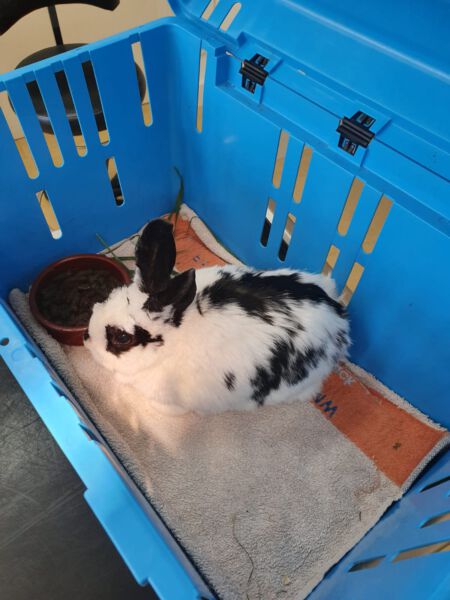
What veterinary costs should be expected?
Veterinary expenses are very difficult to predict, but in case of illness, they can easily reach several hundred or even thousands of euros. Therefore, it’s always wise to have a financial reserve. There are two main options: take out pet health insurance with a fixed monthly premium, or set aside about €1,500 per rabbit and additionally save around €30 per month per animal to ensure solid financial backup in case of emergencies.
A veterinary bill consists of many different items, so the final amount can vary considerably depending on what is done. During a vaccination appointment, for example, additional costs may arise for fecal tests, treatment of any diagnosed illnesses, nail trimming, shaving of the anal area, as well as check-ups, X-rays, or ear examinations in lop-eared rabbits.
Prices are regulated under the Veterinary Fee Schedule (GOT) in Germany. The veterinarian may charge between one and three times the base rate, plus VAT, medication, and materials used.
What are the total lifetime costs for two rabbits?
Rabbits are not cheap pets. Many owners completely underestimate the lifetime costs of keeping them. According to a British study — figures that are also comparable in Germany — a single rabbit costs around €12,800 over its lifetime. For two rabbits, that’s roughly €18,000.
Other estimates put the figure at about €8,000 per rabbit, i.e. approximately €12,000 for two.
Based on our own estimates and experience, we can confirm that the higher figure is realistic: with an average lifespan of around 8 years, keeping two rabbits typically amounts to about €18,000 in total.


